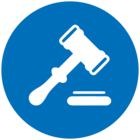does webroot have a way to allow a program to access the internet to complete installation?
Keep getting "not connected to the internet" when the program I'm trying to install needs access to finish the installation.
Login to the community
No account yet? Create an account
Enter your E-mail address. We'll send you an e-mail with instructions to reset your password.


